Not knowing something isn’t always a sign of intelligence because sometimes you just haven’t been exposed to the content. Non-fiction ‘illustrated books’ are a great way to introduce things to young readers when their brains are forming their learning pathways. These books are meant for elementary school ages, but defy what people normally think of when they think of them. More often than not, they’re smarter and operate at a higher perceived level then what people expect. Unlocking the Universe: The Cosmic Discoveries of the Webb Space Telescope is living large in that section of the library now.
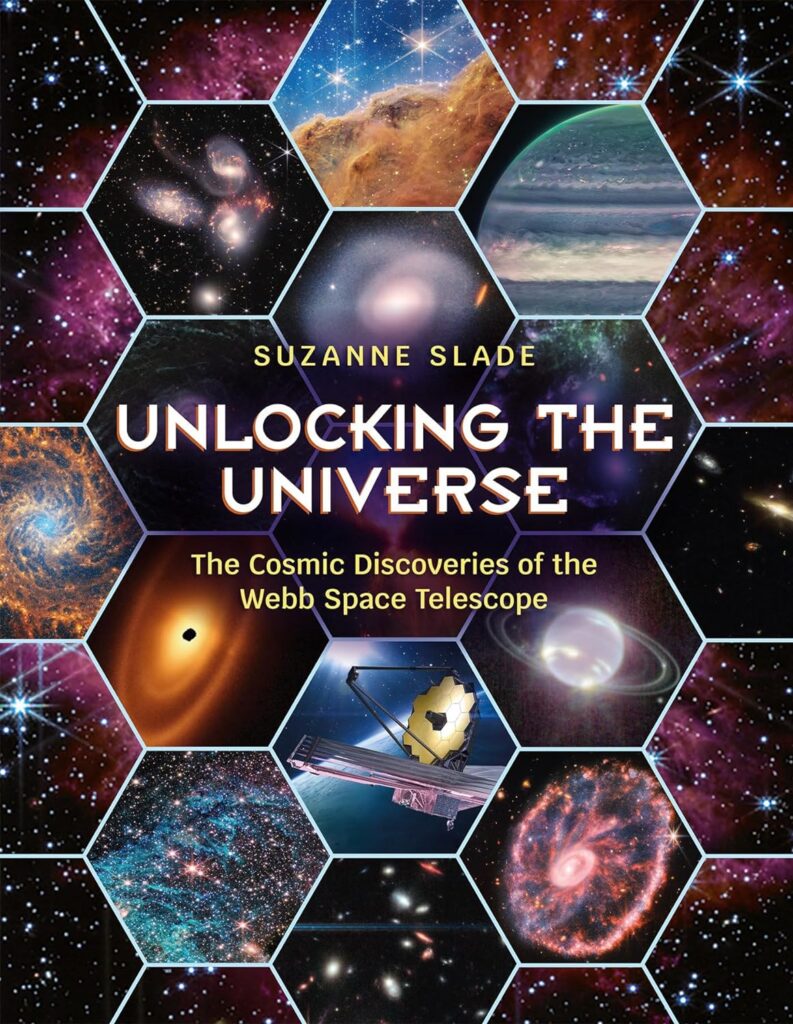
It’s a book aimed at younger readers, but whose content can be intimidating. Those elementary school ages are curious about space exploration and the amazing photographs but probably don’t know much about the work needed to get those telescopes into space. Unlocking the Universe is interesting to those young ages, without taking the soft, kawaii approach. This is a book whose content will be entertaining to ages seven and up, while it will be educational to those students through high school.
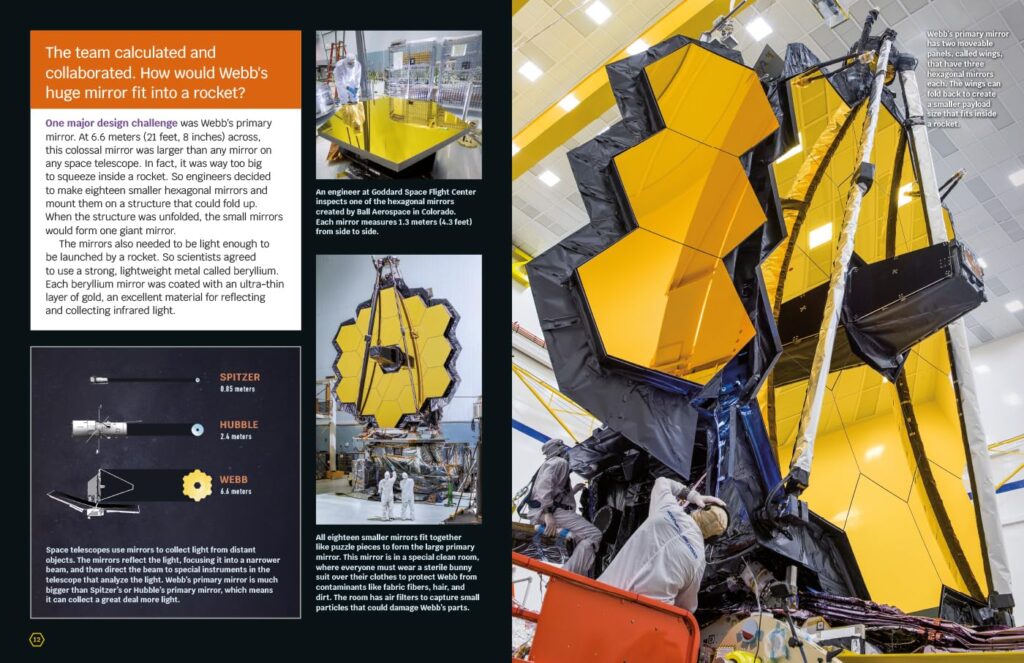
This book could’ve been created using illustrations, but instead is loaded with dozens upon dozens of photographs. These photos show scientists working on mirrors that will go into space, the Webb Space Telescope itself, transporting the telescope, its launch from the Guiana Space Centre, and many examples of its work in space. The real photographs bring home the hard work needed to get the telescope done and its scale, relative to things here on Earth. The combination is a feeling of being very small, yet able to peer into something so vast that justifies the common search terms regarding the Webb Space Telescope is “are images from the Webb Space Telescope real?”
One reason that the book plays across such a large age group is in the text’s presentation. Most of the two-page spreads lead off with a simple or compound sentence in large font. There’s a more detailed paragraph below that and a paragraph or two that are associated with the graphics or photographs on the pages also. The large font sets up the conversation, the ensuing text goes a little deeper and the captions or other data on the pages helps drive curiosity and interest in the subject.
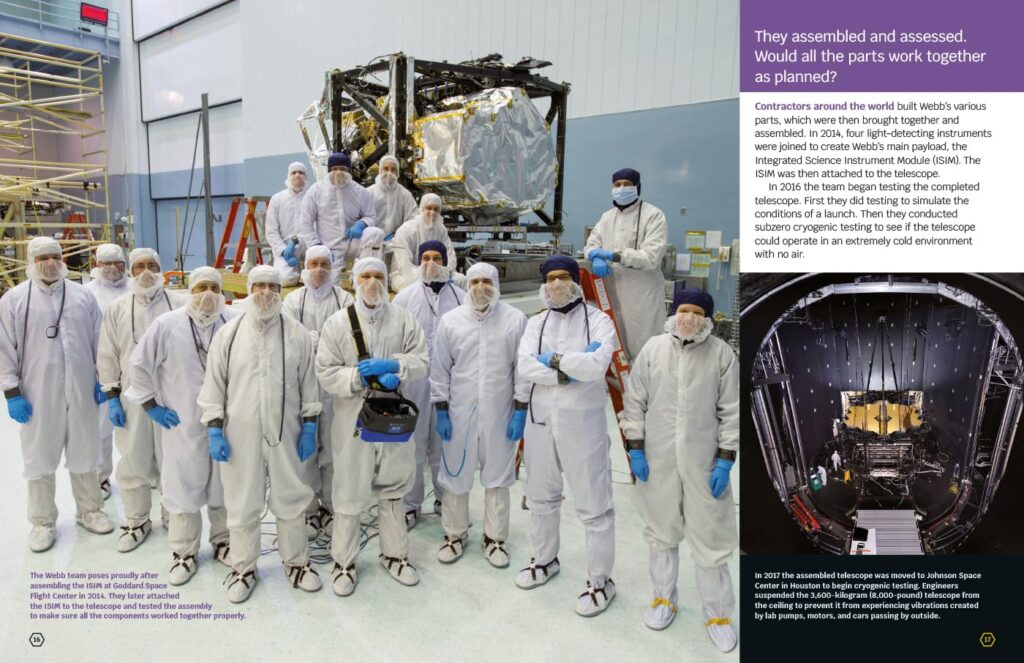
That setup sounds like it’s a read-aloud book that could happen on the carpet for story time, but the book doesn’t demo that young. Unlocking the Universe aims higher due to its text, degree of comprehension needed and general interest. In some cases, when the reader is able to water down the main paragraphs to an age-appropriate level and read the set-up sentences of those first through fourth graders, it’ll be great mind food for STEM-curious young ages. That situation is the exception rather than the rule and it’s more likely to be for the STEM-inclined fifth-grade students and older, simply because of the scope of the book’s topic.
Unlocking the Universe, due to its behind-the-scenes and deep space images will make some kids curious. Because some youth are already interested in space and how humans get our images of that wondrous area, it’ll really hook those students who know a little about the ‘what’, but want to know more about the ‘how’ regarding space photography and exploration.
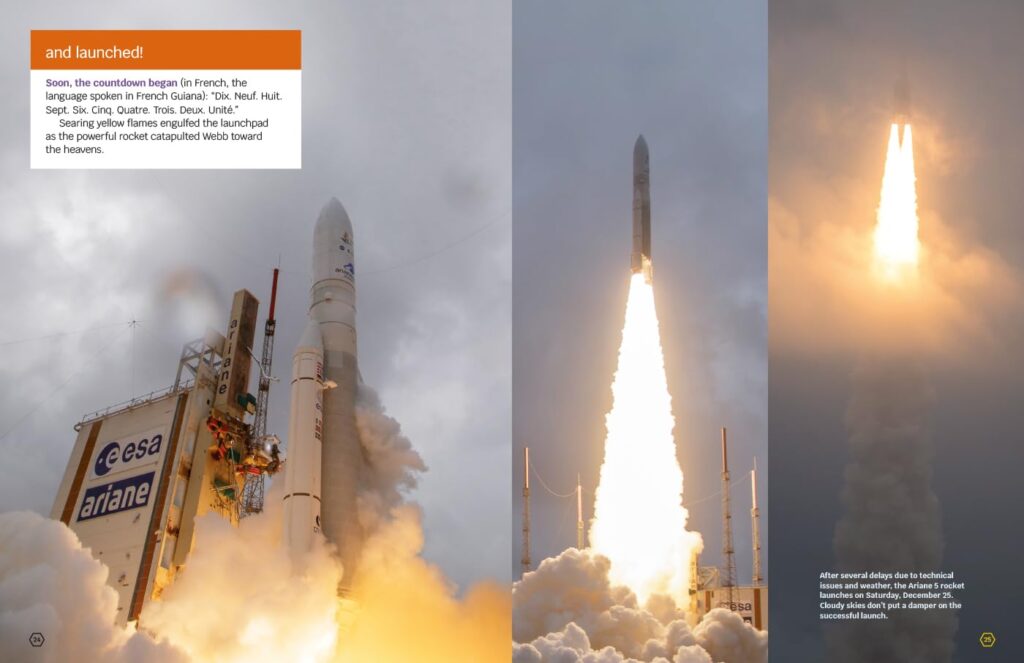
Much like the images that the Webb Space Telescope has sent back, it’s the photographs in the book that drive the reader’s attention. You start the pages by looking at them and then migrate towards the text to learn more. The fact that you see the people involved in making the telescope puts a face to the technology and reinforces to young readers that these advances were actually done by people. And because these advances were planned decades before they were launched then there must be some seriously mind-blowing things in the pipeline now. Cosmic telescopes are a generational assignment and those who start them might not even see their work come to fruition, much less operate them.
Unlocking the Universe is entirely about the Webb Space Telescope, but there are two pages that spotlight some of the other famous telescopes, like Hubble, Compton Gamma Ray Observatory, Spitzer Space Telescope and Chandra X-Ray Observatory. Ironically, we spoke with Cady Coleman about her role in deploying Chandra, how it was released, its size and how it has impacted the study of black holes. As fascinating as Unlocking the Universe is in its surprisingly deep look at the Webb Space Telescope, you could easily see, and willingly dive into an illustrated/reference/entertaining book on any of those telescopes or observatories.
Unlocking the Universe: The Cosmic Discoveries of the Webb Space Telescope is by Suzanne Slade with some photographs by Chris Gunn and is available on Charlesbridge Publishing.
There are affiliate links in this post.
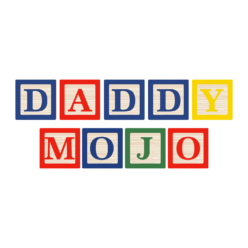
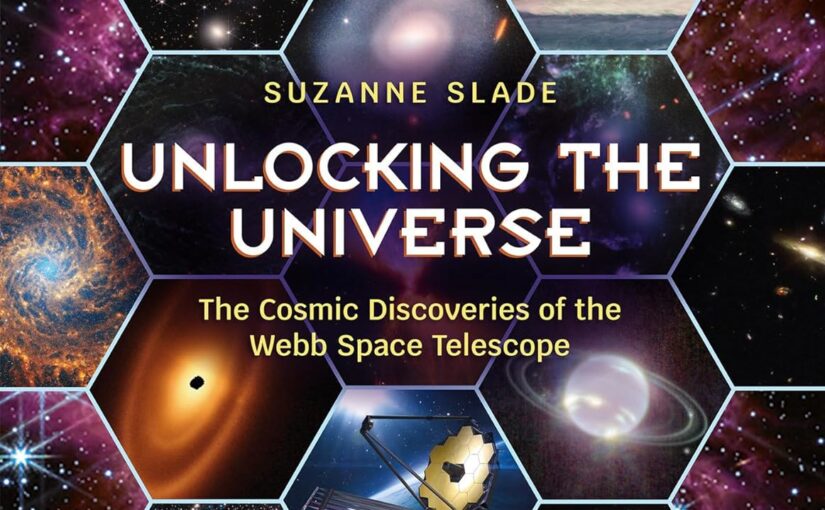



 Facebook
Facebook Twitter
Twitter Flickr
Flickr GooglePlus
GooglePlus Youtube
Youtube